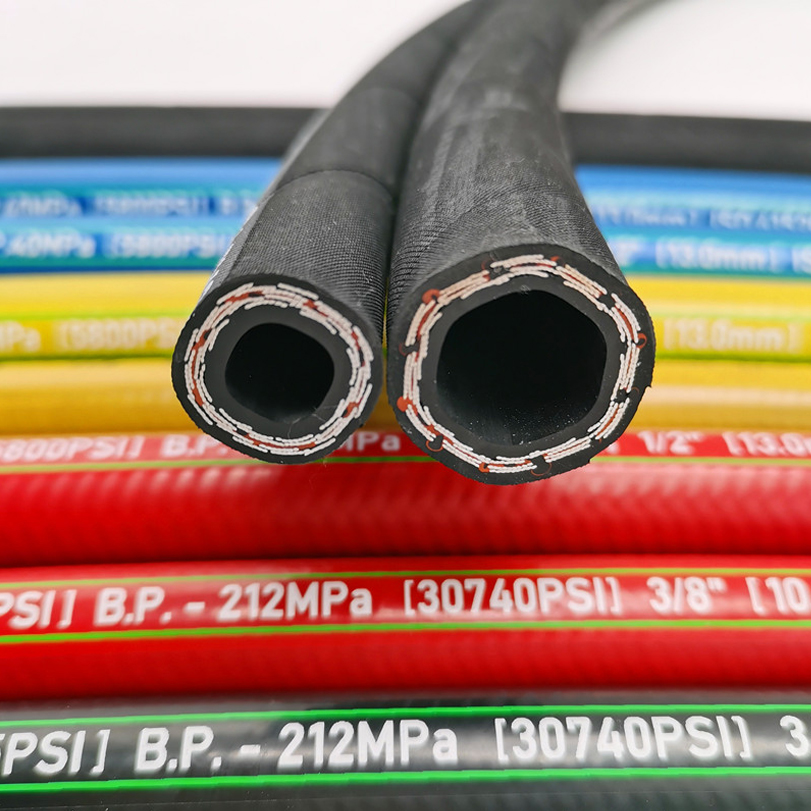335345435
lis . 17, 2024 02:19 Back to list
ptfe flex hose
PTFE Flex Hose A Comprehensive Guide
Polytetrafluoroethylene (PTFE) flex hoses are an essential component in various industries, offering superior performance in high-temperature, high-pressure, and corrosive environments. Their unique properties make them an ideal choice for applications ranging from chemical processing to food and beverage handling. In this article, we will explore the features, benefits, applications, and maintenance of PTFE flex hoses, highlighting why they are a preferred option for many industrial applications.
Understanding PTFE
PTFE, commonly known as Teflon, is a synthetic fluoropolymer. It possesses excellent chemical resistance and can withstand high temperatures without degrading. The versatility of PTFE makes it suitable for a wide range of applications, especially where conventional materials might fail. PTFE is non-reactive, which means it does not interact with other substances, making it a go-to choice for transferring aggressive chemicals.
Features of PTFE Flex Hoses
PTFE flex hoses are characterized by their flexibility, lightweight design, and durability. They are typically reinforced with a braided stainless steel or carbon fiber exterior, providing additional strength and protection against external damage while maintaining flexibility. The interior surface of PTFE hoses is smooth, which minimizes friction and allows for easy flow of fluids. This feature is especially beneficial in systems that require efficient and uninterrupted fluid transfer.
Benefits of Using PTFE Flex Hoses
1. Chemical Resistance PTFE flex hoses can withstand a wide range of chemicals, including acids, bases, and solvents. This resistance helps prevent corrosion and ensures the longevity of the hose in harsh environments.
2. Temperature Tolerance PTFE can operate effectively in extreme temperatures, ranging from -320°F to 500°F (-196°C to 260°C). This thermal stability allows PTFE flex hoses to be used in high-heat applications like steam transfer or hot oil circulation without risk of failure.
3. Non-Stick Properties The non-stick nature of PTFE prevents buildup of residues, making it an excellent choice for food processing and pharmaceutical applications where cleanliness is paramount.
ptfe flex hose

4. Flexibility and Versatility PTFE flex hoses maintain their flexibility even under challenging conditions, making them easy to install and maneuver in tight spaces. This versatility means they can accommodate dynamic movement without sacrificing integrity.
5. Safety Using PTFE hoses reduces the risk of leaks and environmental contamination due to their robust construction and chemical compatibility.
Applications of PTFE Flex Hoses
PTFE flex hoses find applications across various sectors
- Chemical Processing Used for the transfer of aggressive chemicals and reagents in petrochemical plants and laboratories. - Pharmaceutical Industry Ideal for transporting medicines, as they meet stringent sanitary standards. - Food and Beverage Compliant with FDA regulations, PTFE flex hoses are used in systems for milk, juices, and other consumables. - Aerospace and Automotive Utilized in fuel lines and hydraulic systems where safety and reliability are critical. - Cryogenics Function effectively in extremely low-temperature applications, such as liquefied gases.
Maintenance and Care
To ensure the longevity of PTFE flex hoses, regular maintenance is essential. Inspection for signs of wear, abrasions, or chemical degradation should be conducted frequently, especially in high-stress environments. Avoid bending or twisting the hoses excessively, as this can lead to kinking and reduce flow efficiency. Additionally, when cleaning PTFE hoses, use compatible cleaning agents to prevent damage.
Conclusion
In summary, PTFE flex hoses are invaluable in industrial applications requiring durability, flexibility, and resistance to extreme conditions. Their unique properties make them suitable for a diverse range of sectors, ensuring efficient and safe fluid transfer. By understanding their features and proper maintenance, industries can leverage the benefits of PTFE flex hoses, optimizing their operational performance while maintaining safety and compliance standards. As technology continues to evolve, PTFE flex hoses will undoubtedly remain at the forefront of fluid transfer solutions.
-
SAE 100 R17 Black Smooth Cover Hydraulic Hose
NewsMar.07,2025
-
SAE 100 R17 Black Smooth Cover Hydraulic Hose
NewsMar.07,2025
-
SAE 100 R17 Black Smooth Cover Hydraulic Hose
NewsMar.07,2025
-
SAE 100 R17 Black Smooth Cover Hydraulic Hose
NewsMar.07,2025
-
SAE 100 R17 Black Smooth Cover Hydraulic Hose
NewsMar.07,2025
-
steel wire braided hydraulic hose
NewsMar.07,2025



